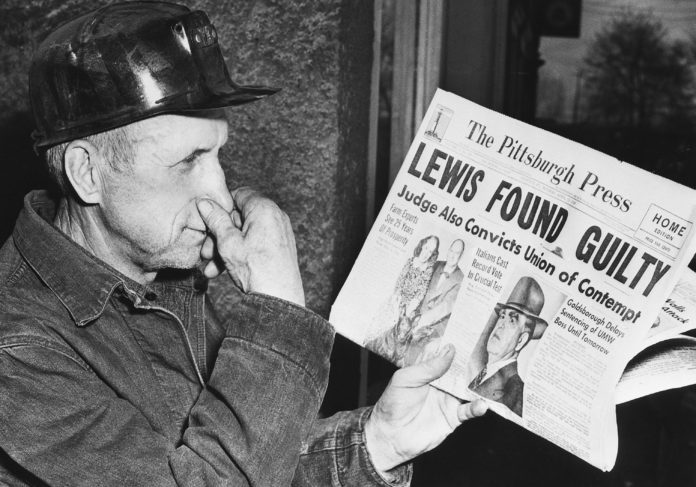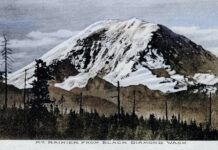In April 1948, coal miners began a nation-wide strike to protest mine operator’s interpretation of the 1947 contract provision for pension benefits. It was part of a struggle to finance the United Mine Workers of America’s (UMWA) retirement and welfare fund. A federal judge ordered a Taft-Hartley injunction against the strike, but the miners led by their union president, John L. Lewis refused to work. The judge socked the UWMA with a $1.4 million fine and ordered Lewis to pay $20,000. At left, a miner showed the typical reaction of a rank-and-file member to the judge’s order. This April 19, 1948 photo comes courtesy of the Pittsburg Press.
The miners eventually went back to work, and on June 25 the mine operators and union settled their dispute with a one-year contract that raised wages by $1 to $14.05 per day. The contract also doubled the 10¢ per ton royalty paid into union’s welfare and retirement fund. However, labor peace was only temporary. In September 1949 the UMWA went on strike, by alternating short work weeks, resulting in more judicial sanctions. Meanwhile, President Truman asked Congress for authority to take over the mines. With that overhanging threat, the union and the operators signed the National Bituminous Coal Wage Agreement on March 6, 1950, the first industry-wide agreement.
This weekend Black Diamond stages its annual Labor Day celebration including the famous parade, which rolls down Highway 169 on Monday at 10 AM. There are plenty of other events on Saturday and Sunday. For more information go to the Black Diamond Labor Days’ Facebook page or visit their website: www.BlackDiamondLaborDays.org








